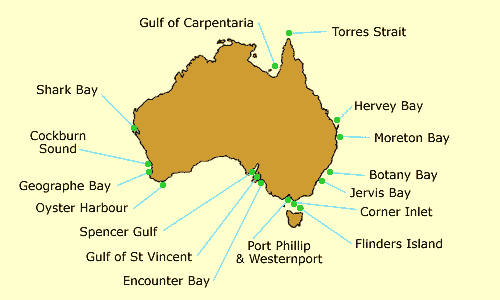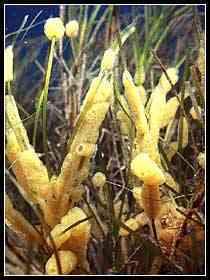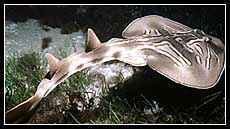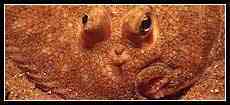Seagrass Meadows
Just below the surface you can find lush, green sea grass meadows. Watch out for giant cuttlefish as they swim past or try to spot crabs, sea snails, pearl oysters or octopuses hiding in the grass.

- What eats seagrass?
- As well as being an important food for dugongs, black swans also love to eat sea grass.
- Do seagrass roots take up water like land grass?
- Seagrass roots absorb nutrients but unlike land plants to not take up water.
- How did the sea get grass?
- Seagrasses have land based ancestors, and only returned to the sea in recent evolutionary history.
- When do seagrasses produce flowers?
- Most seagrass species produce flowers in autumn or summer.
- Are seagrasses the lungs of the sea?
- One square metre of seagrass can generate up to 10 litres of oxygen per day.
Where can you see sea grass meadows?

- New South Wales
- Jervis Bay
Botany Bay, Sydney
Lake Macquarie - Queensland
- Hervey Bay
- South Australia
- Spencer Gulf
Gulf of St Vincent
Encounter Bay - Tasmania
- Norfolk Bay
Pittwater - Victoria
- Corner Inlet
Port Phillip and Westernport Bay - Western Australian
- Jurien, Marmion Marine Park, Shoalwater Islands Marine Park
Shark Bay
Cockburn Sound
Geographe Bay
Oyster Harbour - Northern Territory
- Gulf of Carpentaria, particularly off West Island in the Limmen Bight
What lives here?
In the meadows: Swimming among the meadows are a diverse range of fish, from fiddler rays to pipefish. Small plants and animals live on the stems and leaves of the seagrass. These include yellow sponges and sea mosses. Look closely and you can see small crustaceans like seed shrimps, sea fleas, sea lice, small pebble crabs and pea crabs.
Crawling over the grass: Segmented worms crawl over the grass in search of food. In the sediment: Underneath the meadows live stalked sea squirts and large razor clams.

Dr B. Diversity tells all
Seagrasses are flowering plants that grow underwater in coastal marine and estuarine environments. They tend to grow in shallow, well lit water in the shelter of bays and inlets and often form dense meadows that look like the lush, green grasslands that grow on land. Seagrass meadows are important breeding and feeding grounds for large numbers of fish and invertebrate species, and provide critical habitat for dugongs and turtles. They also play an important role in the food web of inshore coastal areas.
Australian waters have the world's highest diversity of seagrass species:
- 22 species found in temperate (cold) waters
- 15 species found in tropical waters.
Australia has about 51 000 sq km of seagrass meadows. The largest of these are in Western Australia and Queensland. Western Australia is home to the most diverse number of seagrass species in Australia.

Do whales drop-in?
Pygmy right whales are thought to forage the open seafloor in near shore waters on the open coast of southern Australia. In sheltered bays, they swim over or near seagrass beds.
Here in the year 2050?
Sea grasses are very sensitive to some human impacts. They are very slow to recover from any sort of impact:
- The most dominant temperate sea grass species spread very slowly. They can t
- ake centuries to regrow in damaged areas Floods and cyclones have affected about 1000 sq km of seagrass meadows over the past 10 years, and their recovery has been slower than expected
- About 450 sq km of the meadows have been damaged from human actions, such as dredging.

Did you know?
Seagrasses are important indicators of the health of the marine environment. The news is not good for areas around our coastal cities. Large areas of seagrass have died in the last 20 years. While scientists are still trying to work out why some of these die backs have happened, they think that many are due to:
- loss of light due to sedimentation
- algae growth due to increased nutrient levels in the water.
The long term impacts of global warming caused by climate change on seagrass meadows has concerned some scientists who think that their slow growth rate may affect their ability to adapt well to changing climate and rising sea levels.
What can you do to help conserve seagrass meadows
Support the creation of marine national parks and reserves that protect these habitats.
